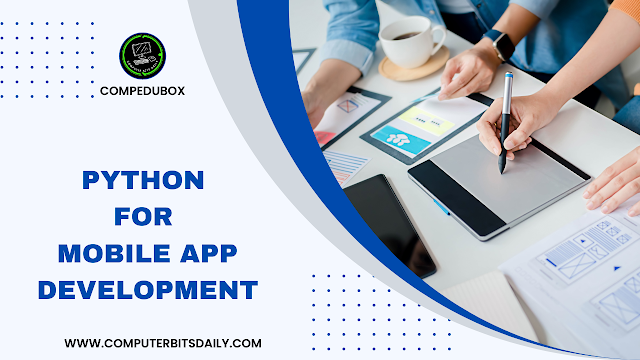In the rapidly evolving world of mobile application development, Python has emerged as a powerful and flexible programming language. With its simplicity and the strength of Python modules, it has become a fantastic choice for developers. Python's extensive libraries offer reusable code that streamlines the development process, making it easier and faster. Whether you're building a simple utility app or a sophisticated game, Python provides the freedom and resources to bring your ideas to life. In this step-by-step guide, we will explore Python's role in mobile application development.
Table of Contents: Mobile App Development
- Installing Python
- Ensure Python is set up on your machine.
- Download Python from the official website.
- Select the version that suits your needs.
- Choosing a Python Framework
- Explore Python frameworks for mobile app development.
- Popular choices: Kivy, BeeWare, SL4A (Scripting Layer for Android).
- Learn about Kivy for creating cutting-edge, multi-touch apps.
- Discover BeeWare for cross-platform app development.
- Setting Up Your Development Environment
- Configuration steps vary based on your chosen framework.
- App Development and Release
- Begin coding using your framework's syntax and conventions.
- Develop the user interface and incorporate necessary features.
- Testing Your App
- Thoroughly test your app to identify and resolve issues.
- Deployment
- Publish your app following the framework-specific procedures.
Python is a dynamic and versatile language that has gained immense popularity in the realm of mobile application development. Its comprehensive libraries and user-friendly syntax make it an excellent choice for developers. This guide will walk you through the steps to harness the power of Python in creating mobile applications.
| Explore my Python course app for an empowering learning journey! 🐍💻
Installing Python
Before embarking on your mobile app development journey, it's essential to ensure Python is set up on your development machine.
Choosing a Python Framework
Python offers a variety of frameworks tailored to mobile app development. Here is some of the most popular options, such as Kivy, BeeWare, and SL4A, to help you make an informed choice.
Setting Up Your Development Environment
Once you've selected a Python framework, it's time to configure your development environment. Each framework may have unique requirements.
App Development and Release
With your environment in place, you can start creating your mobile app. Learn how to write Python code using your chosen framework's conventions, develop a user-friendly interface, and implement the desired features.
Testing Your App
No app is complete without rigorous testing. Discover the best practices for evaluating your app, ensuring it functions flawlessly, and identifying and resolving any bugs.
| Discover the practical Python learning list today! 🐍🚀
Deployment
When you're satisfied with your app's performance, it's time to deploy it. The deployment process varies based on your chosen framework, and we'll provide insights into each.
Python has opened up exciting possibilities for mobile app development. With its robust libraries and user-friendly syntax, it has become a top choice for developers. This comprehensive guide has equipped you with the knowledge and steps needed to leverage Python in creating mobile applications. Now, it's your turn to turn your innovative ideas into reality.
| Explore my Python course app for an empowering learning journey! 🐍💻
By following the steps outlined in this guide, you can embark on your mobile app development journey with confidence. Python's simplicity and versatility will empower you to create apps that shine in the dynamic world of mobile technology.
Stay tuned for more updates and insights on Python and mobile app development !




0 Comments